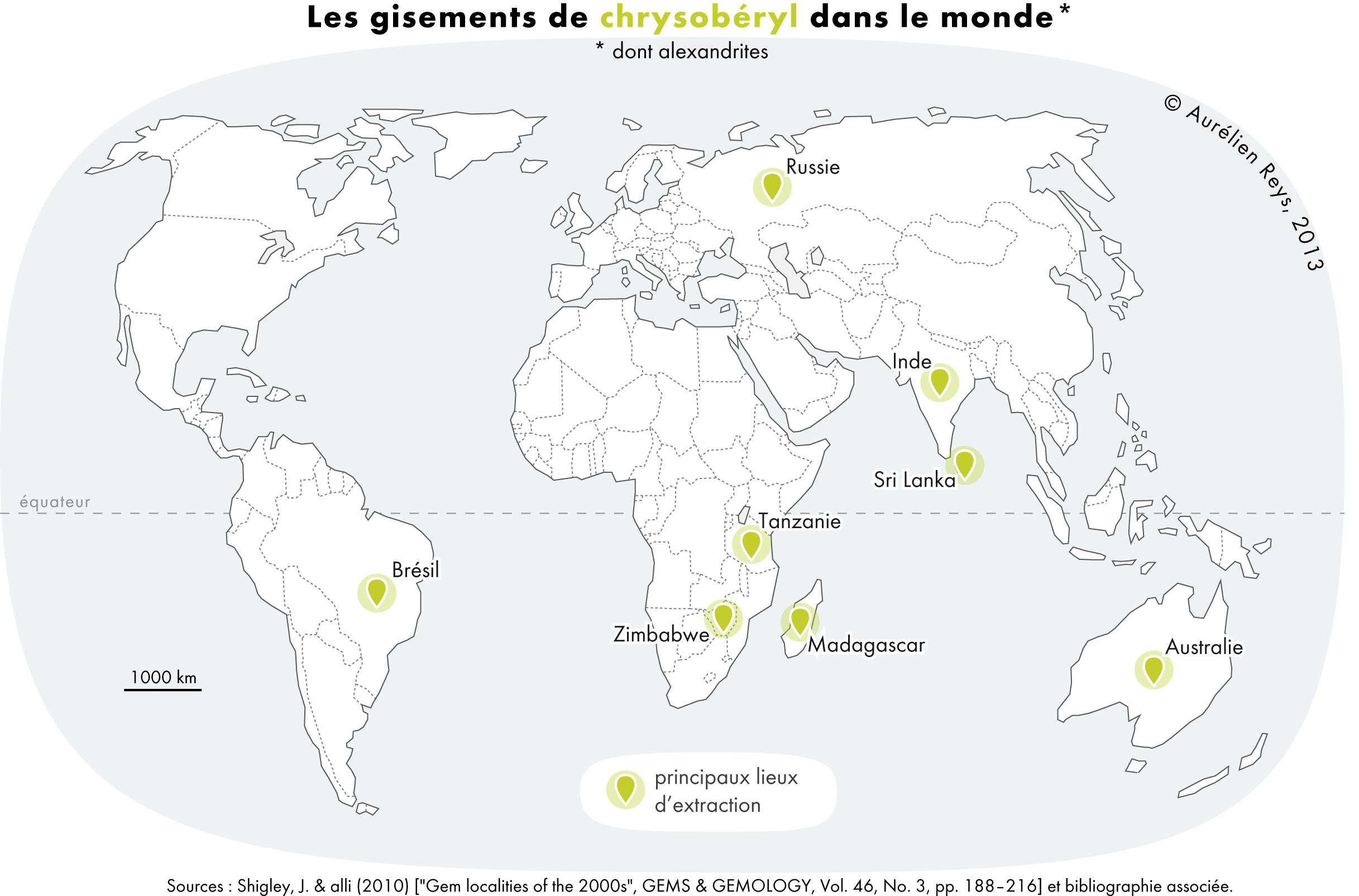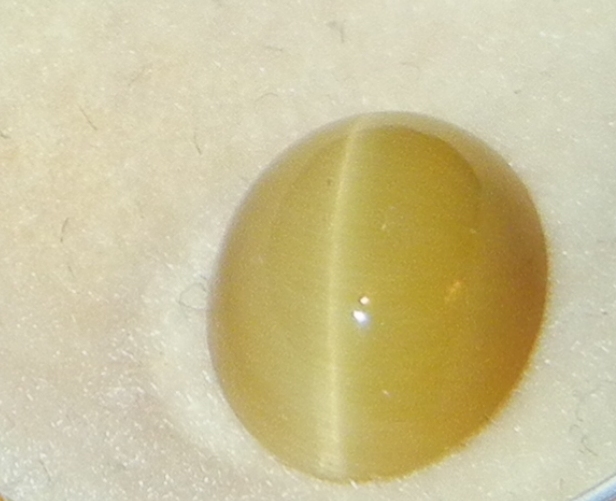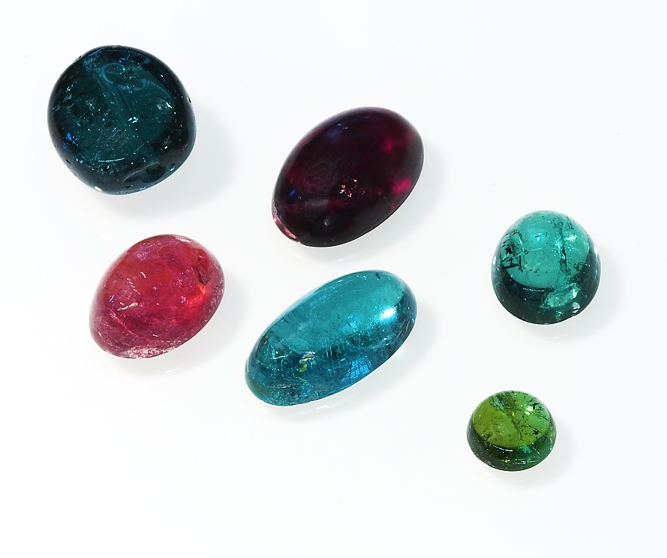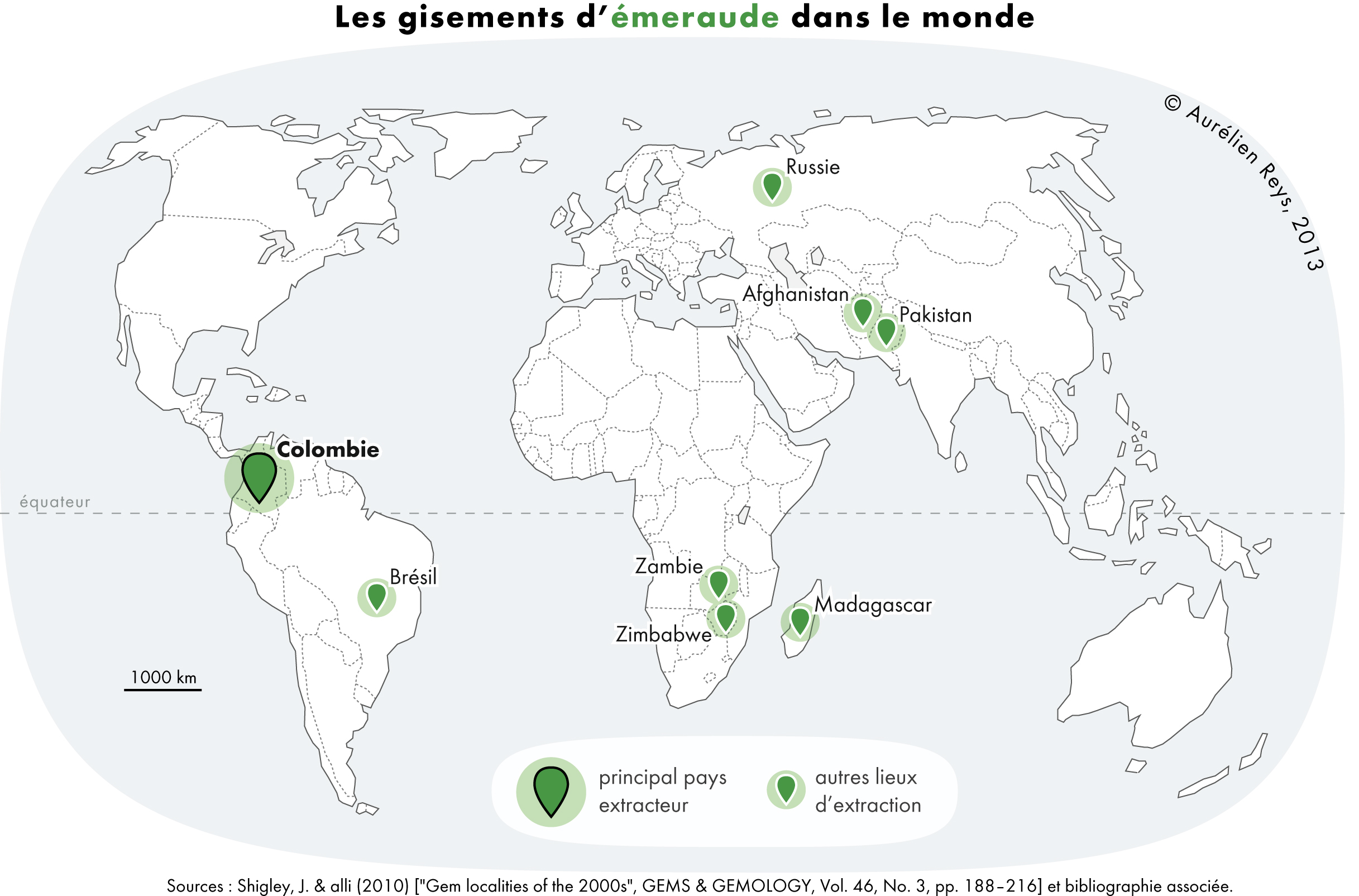|
Chrysoberyl
The mineral or gemstone chrysoberyl is an aluminate of beryllium with the formula Be Al2 O4. The name chrysoberyl is derived from the Greek words χρυσός ''chrysos'' and βήρυλλος ''beryllos'', meaning "a gold-white spar". Despite the similarity of their names, chrysoberyl and beryl are two completely different gemstones, although they both contain beryllium. Chrysoberyl is the third-hardest frequently encountered natural gemstone and lies at 8.5 on the Mohs scale of mineral hardness, between corundum (9) and topaz (8). An interesting feature of its crystals are the cyclic twins called ''trillings''. These twinned crystals have a hexagonal appearance, but are the result of a triplet of twins with each "twin" oriented at 120° to its neighbors and taking up 120° of the cyclic trilling. If only two of the three possible twin orientations are present, a "V"-shaped twin results. Ordinary chrysoberyl is yellowish-green and transparent to translucent. When the minera ... [...More Info...] [...Related Items...] OR: [Wikipedia] [Google] [Baidu] |
Chatoyancy
In gemology, chatoyancy ( ), or chatoyance or cat's eye effect, is an optical reflectance effect seen in certain gemstones, woods, and carbon fibre. Coined from the French "œil de chat", meaning "cat's eye", chatoyancy arises either from the fibrous structure of a material, as in tiger's eye quartz, or from fibrous inclusions or cavities within the stone, as in cat's eye chrysoberyl. Description The precipitates that cause chatoyance in chrysoberyl are the mineral rutile, composed mostly of titanium dioxide. Examined samples have yielded no evidence of tubes or fibres. The rutile precipitates all align perpendicularly with respect to cat's eye effect. It is reasoned that the lattice parameter of the rutile matches only one of the three orthorhombic crystal axes of the chrysoberyl, resulting in preferred alignment along that direction. The effect can be likened to the sheen off a spool of silk: The luminous streak of reflected light is always perpendicular to the directio ... [...More Info...] [...Related Items...] OR: [Wikipedia] [Google] [Baidu] |
Beryllium
Beryllium is a chemical element with the symbol Be and atomic number 4. It is a steel-gray, strong, lightweight and brittle alkaline earth metal. It is a divalent element that occurs naturally only in combination with other elements to form minerals. Notable gemstones high in beryllium include beryl ( aquamarine, emerald) and chrysoberyl. It is a relatively rare element in the universe, usually occurring as a product of the spallation of larger atomic nuclei that have collided with cosmic rays. Within the cores of stars, beryllium is depleted as it is fused into heavier elements. Beryllium constitutes about 0.0004 percent by mass of Earth's crust. The world's annual beryllium production of 220 tons is usually manufactured by extraction from the mineral beryl, a difficult process because beryllium bonds strongly to oxygen. In structural applications, the combination of high flexural rigidity, thermal stability, thermal conductivity and low density (1.85 times that of wate ... [...More Info...] [...Related Items...] OR: [Wikipedia] [Google] [Baidu] |
Cyclic Twin
Crystal twinning occurs when two or more adjacent crystals of the same mineral are oriented so that they share some of the same crystal lattice points in a symmetrical manner. The result is an intergrowth of two separate crystals that are tightly bonded to each other. The surface along which the lattice points are shared in twinned crystals is called a composition surface or twin plane. Crystallographers classify twinned crystals by a number of twin laws. These twin laws are specific to the crystal structure. The type of twinning can be a diagnostic tool in mineral identification. Deformation twinning, in which twinning develops in a crystal in response to a shear stress, is an important mechanism for permanent shape changes in a crystal.Courtney, Thomas H. (2000) ''Mechanical Behavior of Materials'', 2nd ed. McGraw Hill. Definition Twinning is a form of symmetrical intergrowth between two or more adjacent crystals of the same mineral. It differs from the ordinary random i ... [...More Info...] [...Related Items...] OR: [Wikipedia] [Google] [Baidu] |
Mohs Scale Of Mineral Hardness
The Mohs scale of mineral hardness () is a Qualitative property, qualitative ordinal scale, from 1 to 10, characterizing scratch hardness, scratch resistance of various minerals through the ability of harder material to scratch softer material. The scale was introduced in 1812 by the German geologist and Mineralogy, mineralogist Friedrich Mohs, in his book ''"Versuch einer Elementar-Methode zur naturhistorischen Bestimmung und Erkennung der Fossilien"''; it is one of several definitions of Hardness comparison, hardness in materials science, some of which are more quantitative. The method of comparing hardness by observing which minerals can scratch others is of great antiquity, having been mentioned by Theophrastus in his treatise ''On Stones'', , followed by Pliny the Elder in his ''Natural History (Pliny), Naturalis Historia'', . The Mohs scale is useful for identification of minerals in the field, but is not an accurate predictor of how well materials endure in an industrial s ... [...More Info...] [...Related Items...] OR: [Wikipedia] [Google] [Baidu] |
Cabochon
A cabochon (; ) is a gemstone that has been shaped and polished, as opposed to faceted. The resulting form is usually a convex (rounded) obverse with a flat reverse. Cabochon was the default method of preparing gemstones before gemstone cutting developed. Application Cutting ''en cabochon'' (French: "in the manner of a cabochon") is usually applied to opaque gems, while faceting is usually used for transparent stones. Hardness is also taken into account as softer gemstones with a hardness lower than 7 on the Mohs hardness scale are easily scratched, mainly by silicon dioxide in dust and grit. This would quickly make translucent gems unattractive—instead they are polished as cabochons, making the scratches less evident. In asteriated stones such as star sapphires and chatoyant stones such as cat's eye chrysoberyl, a domed cabochon cut can show the star or eye, which would not be visible in a faceted cut. The usual shape for cutting cabochons is an ellipse, becaus ... [...More Info...] [...Related Items...] OR: [Wikipedia] [Google] [Baidu] |
Aluminate
In chemistry, an aluminate is a compound containing an oxyanion of aluminium, such as sodium aluminate. In the naming of inorganic compounds, it is a suffix that indicates a polyatomic anion with a central aluminum atom. Aluminate oxyanions Aluminium oxide (alumina) is amphoteric: it dissolves in both bases and acids. When dissolved in bases it forms hydroxyaluminate ions in the same way as aluminium hydroxide or aluminium salts. The hydroxyaluminate or hydrated aluminate can be precipitated and then calcined to produce anhydrous aluminates. Aluminates are often formulated as a combination of basic oxide and aluminium oxide, for example the formula of anhydrous sodium aluminate NaAlO2 would be shown as Na2O·Al2O3. A number of aluminate oxyanions are known: * The simplest is the approximately tetrahedral found in the compound Na5AlO4, * framework ions in anhydrous sodium aluminate NaAlO2 and monocalcium aluminate, CaAl2O4 made up of corner-sharing tetrahedra. * A ring ani ... [...More Info...] [...Related Items...] OR: [Wikipedia] [Google] [Baidu] |
Topaz
Topaz is a silicate mineral of aluminium and fluorine with the chemical formula Al Si O( F, OH). It is used as a gemstone in jewelry and other adornments. Common topaz in its natural state is colorless, though trace element impurities can make it pale blue or golden brown to yellow orange. Topaz is often treated with heat or radiation to make it a deep blue, reddish-orange, pale green, pink, or purple. Although it is often associated with golden yellow and blue, it comes in a variety of colors, including colorless. The rarest are natural pinks, reds, and delicate golden oranges, sometimes with pink hues. Topaz is a nesosilicate mineral. It is one of the hardest naturally occurring minerals and has a relatively low index of refraction. It occurs in many places in the world. Etymology The name "topaz" is usually believed to be derived (via Old French: Topace and Latin: Topazus) from the Greek ''Τοπάζιος'' (Topázios) or ''Τοπάζιον'' (Topázion), from Τοπα ... [...More Info...] [...Related Items...] OR: [Wikipedia] [Google] [Baidu] |
Oxide Minerals
The oxide mineral class includes those minerals in which the oxide anion (O2−) is bonded to one or more metal alloys. The hydroxide-bearing minerals are typically included in the oxide class. The minerals with complex anion groups such as the silicates, sulfates, carbonates and phosphates are classed separately. Simple oxides: *XO **Periclase group *** Periclase *** Manganosite **Zincite group *** Zincite *** Bromellite *** Tenorite *** Litharge * ** Cuprite ** Ice * **Hematite group ***Corundum ***Hematite *** Ilmenite * **Rutile group *** Rutile *** Pyrolusite *** Cassiterite ** Baddeleyite ** Uraninite ** Thorianite * **Spinel group *** Spinel *** Gahnite ***Magnetite ***Franklinite *** Chromite ** Chrysoberyl ** Columbite *Hydroxide subgroup: ** Brucite ** Manganite **Romanèchite **Goethite group: *** Diaspore *** Goethite Nickel–Strunz Classification -04- Oxides IMA-CNMNC proposes a new hierarchical scheme (Mills et al., 2009). ... [...More Info...] [...Related Items...] OR: [Wikipedia] [Google] [Baidu] |
Pleochroic
Pleochroism (from Greek πλέων, ''pléōn'', "more" and χρῶμα, ''khrôma'', "color") is an optical phenomenon in which a substance has different colors when observed at different angles, especially with polarized light. Background Anisotropic crystals will have optical properties that vary with the direction of light. The direction of the electric field determines the polarization of light, and crystals will respond in different ways if this angle is changed. These kinds of crystals have one or two optical axes. If absorption of light varies with the angle relative to the optical axis in a crystal then pleochroism results. Anisotropic crystals have double refraction of light where light of different polarizations is bent different amounts by the crystal, and therefore follows different paths through the crystal. The components of a divided light beam follow different paths within the mineral and travel at different speeds. When the mineral is observed at some an ... [...More Info...] [...Related Items...] OR: [Wikipedia] [Google] [Baidu] |
Emerald
Emerald is a gemstone and a variety of the mineral beryl (Be3Al2(SiO3)6) colored green by trace amounts of chromium or sometimes vanadium.Hurlbut, Cornelius S. Jr. and Kammerling, Robert C. (1991) ''Gemology'', John Wiley & Sons, New York, p. 203, . Beryl has a hardness of 7.5–8 on the Mohs scale. Most emeralds are highly included, so their toughness (resistance to breakage) is classified as generally poor. Emerald is a cyclosilicate. Etymology The word "emerald" is derived (via fro, esmeraude and enm, emeraude), from Vulgar Latin: ''esmaralda''/''esmaraldus'', a variant of Latin ''smaragdus'', which was a via grc, σμάραγδος (smáragdos; "green gem") from a Semitic language. According to Webster's Dictionary the term emerald was first used in the 14th century. Properties determining value Emeralds, like all colored gemstones, are graded using four basic parameters–the four ''C''s of connoisseurship: ''color'', ''clarity,'' ''cut'' and ''carat weight''. ... [...More Info...] [...Related Items...] OR: [Wikipedia] [Google] [Baidu] |
Polarization (waves)
Polarization ( also polarisation) is a property applying to transverse waves that specifies the geometrical orientation of the oscillations. In a transverse wave, the direction of the oscillation is perpendicular to the direction of motion of the wave. A simple example of a polarized transverse wave is vibrations traveling along a taut string ''(see image)''; for example, in a musical instrument like a guitar string. Depending on how the string is plucked, the vibrations can be in a vertical direction, horizontal direction, or at any angle perpendicular to the string. In contrast, in longitudinal waves, such as sound waves in a liquid or gas, the displacement of the particles in the oscillation is always in the direction of propagation, so these waves do not exhibit polarization. Transverse waves that exhibit polarization include electromagnetic waves such as light and radio waves, gravitational waves, and transverse sound waves ( shear waves) in solids. An electromagneti ... [...More Info...] [...Related Items...] OR: [Wikipedia] [Google] [Baidu] |
Color Temperature
Color temperature is the color of light emitted by an idealized opaque, non-reflective body at a particular temperature measured in kelvins. The color temperature scale is used to categorize the color of light emitted by other light sources regardless of their temperature. Color temperature is a characteristic of visible light that has important applications in lighting, photography, videography, publishing, manufacturing, astrophysics, horticulture, and other fields. In practice, color temperature is meaningful only for light sources that do in fact correspond somewhat closely to the color of some black body, i.e., light in a range going from red to orange to yellow to white to bluish white; it does not make sense to speak of the color temperature of, e.g., a green or a purple light. Color temperature is conventionally expressed in kelvins, using the symbol K, a unit of measure for absolute temperature. Color temperatures over 5000 K are called "cool colors" ... [...More Info...] [...Related Items...] OR: [Wikipedia] [Google] [Baidu] |










